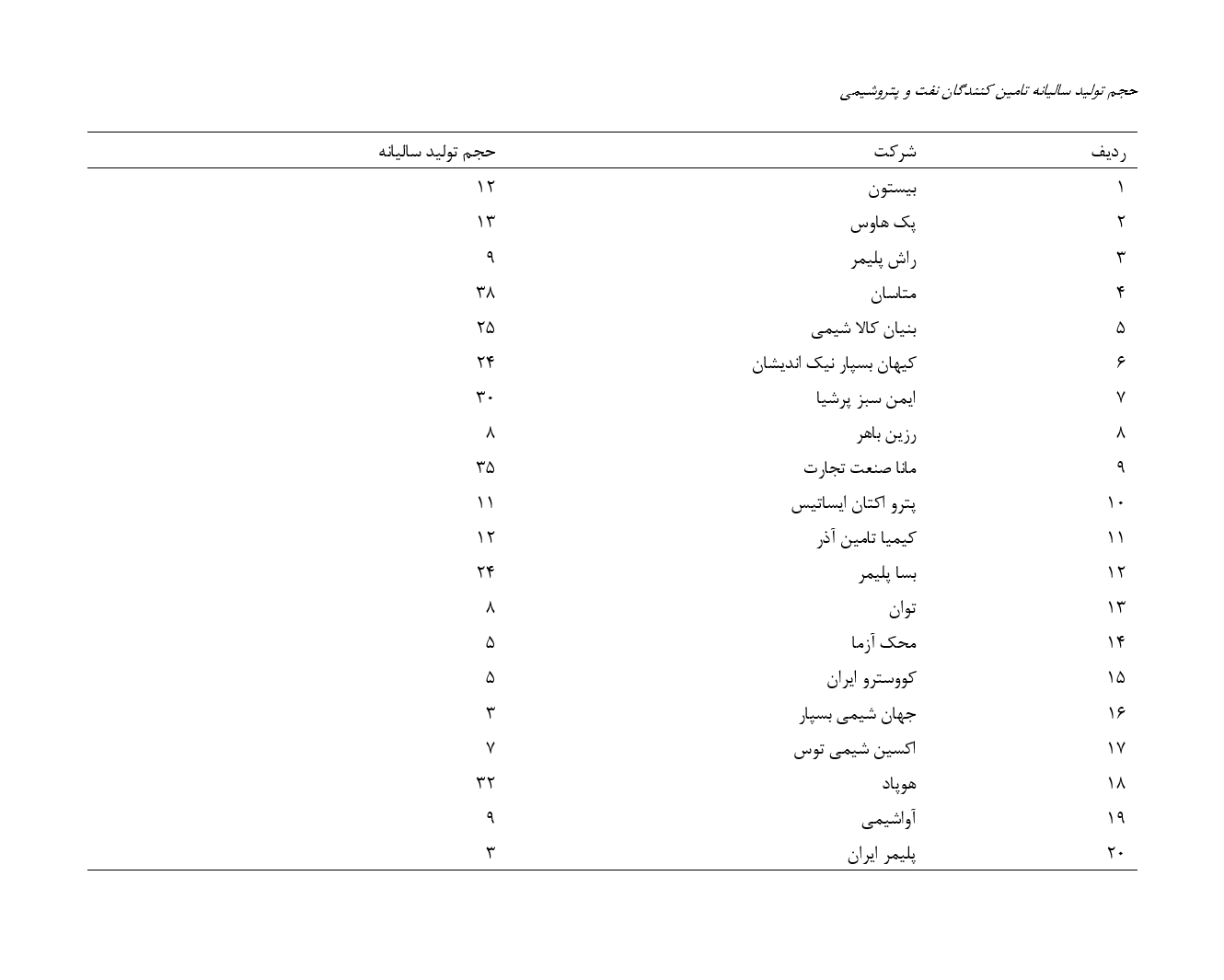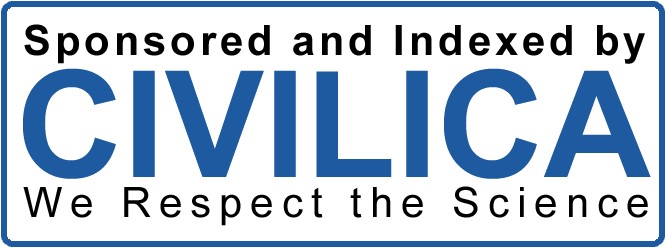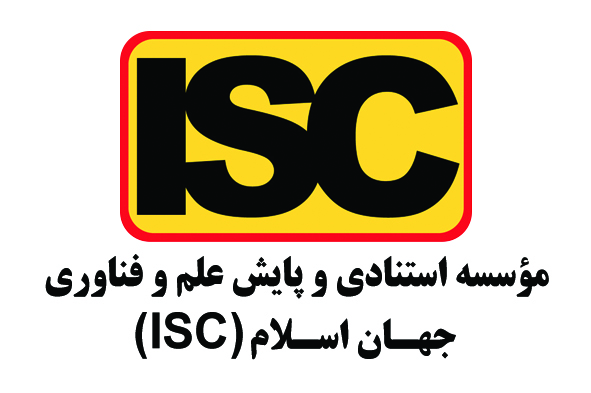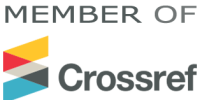طراحی مدل همکاری بین اعضای زنجیره تامین و اندازگیری کارایی تکنیکی شرکتهای تامین کننده با استفاده از تحلیل پوششی دادهها در صنعت نفت و گاز
کلمات کلیدی:
زنجيره تامين , اندازگیری کارایی تکنیکی , شرکت های تامین کننده, صنعت نفت و گاز, تحلیل پوششی داده هاچکیده
با توجه به افزایش رقابت بین شرکتها و تامین کنندگان صنعت نفت و پتروشیمی در عصر حاضر این ضرورت ایجاد میشود که تمامی شرکتهای فعال در این زمینه از میزان کارایی خود اطلاع کامل داشته و علل مختلف کارایی و ناکارایی واحدهای خودشان بررسی نمایند و با دقت و برنامه ریزی مناسب به اصلاح واحدهای کارا بپردازند. با کاراتر شدن واحدهای ناکارا میتوان انتظار داشت که منافع ملی بهتر و بیشتر از قبل تامین گردد. و سیستم تولیع و توسعه نفت و پتروشیمی کشور را کاراتر از قبل میکند. در مقاله حاضر به موضوع طراحی مدل همکاری بین اعضای زنجیره تامین و اندازگیری کارایی تکنیکی شرکتهای تامین کننده با استفاده از تحلیل پوششی دادهها پرداخته شده است. با بررسی دادهها و خروجیهای موثر، با استفاده از تحلیل پوششی دادهها کارایی تکنیکی شرکتهای تامین کننده کشور را با دو فرض بازده به مقیاس ثابت و بازده به مقیاس متغیر به دست آورده میشود. برای این منظور نمونه آماری شامل 15 نفر از خبرگان علمی و تجربی آشنا به مدیریت مالی و بورس که سابقه عملیاتی در مدیریت مالی را داشته اند میباشد. نتایج تحقیق حاکی از آن است ﮐﺎراﯾﯽ ﺗﮑﻨﯿﮑﯽ و ﮐﺎراﯾﯽ ﺗﮑﻨﯿﮑﯽ ﺧﺎﻟﺺ (ﻣﺤﺾ) ﺑﻪ ﻃﻮر ﻣﺴﺘﻘﯿﻢ از ﻣﺤﺎﺳﺒﻪ ﻣﺪل ﻫﺎیسی سی آر وبی سی سی ﺣﺎﺻﻞ میﺷﻮﻧﺪ.. ﺗﺤﺖ ﻓﺮض سی آر اس ﻣﺘﻮﺳﻂ ﮐﺎراﯾﯽ شرکتهای مورد بررسی ﺑﺮاﺑﺮ ﺑﺎ%88،45 میﺑﺎﺷﺪ. از ﻧﻈﺮ ﻫﻨﺪﺳﯽ ﻧﯿﺰ ﺗﺤﺖ اﯾﻦ ﻓﺮض ﻣﺮز ﺗﻮﻟﯿﺪ ﺑﻪ ﺻﻮرت ﯾﮏ ﺧﻂ راﺳﺖ اﺳﺖ ﮐﻪ واﺣﺪﻫﺎی ﮐﺎرا روی آن ﻗﺮار دارﻧﺪ و ﯾﺎ ﺑﻪ ﻋﺒﺎراﺗﯽ آن را میﺳﺎزﻧﺪ. و ﺗﺤﺖ ﻓﺮض وی آر اس ﻧﯿﺰ%90.88 اﺳﺖ. و اﯾﻦ اﻣﺮ ﺣﺎﮐﯽ از آن اﺳﺖ ﮐﻪ شرکتها ﺑﺎ ﻣﻘﺪار ورودی ﻓﻌﻠﯽ%9.12 ﮐﻤﺘﺮ از ﻣﻘﺪار ﺑﻬﯿﻨﻪ ﺗﻮﻟﯿﺪ ﮐﺮده اﻧﺪ. ﻫﻤﭽﻨﯿﻦ ﻣﺮز ﺗﻮﻟﯿﺪ ﺗﺤﺖ اﯾﻦ ﻓﺮض ﻣﻘﻌﺮ اﺳﺖ و ﻫﺮ واﺣﺪ ﺗﻮﻟﯿﺪی ﮐﺎرا در ﺟﺎی ﺧﻮدش روی ﻣﺮز ﻗﺮار میﮔﯿﺮد. ﻣﺘﻮﺳﻂ ﮐﺎراﯾﯽ ﻣﻘﯿﺎس ﻧﯿﺰ ﺑﺮاﺑﺮ%97.17 اﺳﺖ و اﯾﻦ ﺑﺪان ﻣﻌﻨﯽ اﺳﺖ ﮐﻪ ﻣﻘﯿﺎس واﻗﻌﯽ ﺗﻮﻟﯿﺪ%2.83 ﺑﺎ ﻣﻮﻟﺪﺗﺮﯾﻦ ﻣﻘﯿﺎس ﺗﻮﻟﯿﺪ اﺧﺘﻼف دارد. زﻣﺎﻧﯽ ﮐﻪ ﮐﺎراﯾﯽ ﺗﮑﻨﯿﮑﯽ ﻣﺤﺾ (ﺧﺎﻟﺺ) (پی تی ای) از ﮐﺎراﯾﯽ ﻣﻘﯿﺎس ﺑﺰرﮔﺘﺮ ﺑﺎﺷﺪ، در اﯾﻦ ﺣﺎﻟﺖ ﻧﺎﮐﺎراﯾﯽ ﻣﻘﯿﺎس اﯾﺠﺎد میﺷﻮد. در ﺣﺎﻟﺖ عکس اﯾﻦ ﻣﻮﺿﻮع ﺑﺨﺶ ﻋﻤﺪه ﻋﺪم ﮐﺎراﯾﯽ ﻧﺎﺷﯽ از ﻧﺎﮐﺎراﯾﯽ ﺗﮑﻨﯿﮑﯽ ﺧﺎﻟﺺ ﯾﺎ ﻫﻤﺎن ﻧﺎﮐﺎراﯾﯽ ﻣﺪﯾﺮﯾﺘﯽ (ﻋﻤﻠﯿﺎﺗﯽ) اﺳﺖ.
دانلودها
مراجع
Abbas, K., Afaq, M., Ahmed Khan, T., & Song, W. C. (2020). A Blockchain and Machine Learning-Based Drug Supply Chain Management and Recommendation System for Smart Pharmaceutical Industry. Electronics, 9(5), 1-31. https://doi.org/10.3390/electronics9050852
Alizadeh, H., & Ghasemi, M. (2023). The Effect of Tourists' Preferences on the Competitiveness of the Hotel Industry. Quarterly Journal of Tourism Research and Sustainable Development, 5(3), 25-40. https://www.magiran.com/paper/2508703/
Alizadeh, H., & Jalali Filshour, M. (2023). Proposing a Mixed Model of Digital Marketing in the Financial Services Sector with an Emphasis on Artificial Intelligence Tools. 30th National and 11th International Conference on Insurance and Development,
Alizadeh, H., Kheiri, B., & Heiydari, A. (2020). An Investigation of the Brand-Consumer Relationship Model Based on Digital Marketing in the Hotel Industry. International Journal of Management, 11(8), 1075-1093. https://www.researchgate.net/publication/355049567_AN_INVESTIGATION_OF_THE_BRAND-_CONSUMER_RELATIONSHIP_MODEL_BASED_ON_DIGITAL_MARKETING_IN_THE_HOTEL_INDUSTRY
Chopra, S., & Sodhi, M. S. (2021). Managing risk to avoid supply chain breakdown. MIT Sloan management review, 46(1), 53-61. https://sloanreview.mit.edu/article/managing-risk-to-avoid-supplychain-breakdown/
Chu, C. Y., Park, K., & Kremer, G. E. (2020). A global supply chain risk management framework: An application of text-mining to identify region-specific supply chain risks. Advanced Engineering Informatics, 45. https://doi.org/10.1016/j.aei.2020.101053
Huang, J., Huang, H., Si, Y., Xu, Y., Liu, S., & Yang, X. (2024). Green supply chain finance strategies with market competition and financial constraints. Heliyon, 10(8). https://doi.org/10.1016/j.heliyon.2024.e29511
Kannan, G., Haq, A. N., Sasikumar, P., & Arunachalam, S. (2008). Analysis and selection of green suppliers using interpretative structural modelling and analytic hierarchy process. International Journal of Management and Decision Making, 9(2), 163-182. https://doi.org/10.1504/IJMDM.2008.017198
Ningrum, E., Nugroho, A., Darmansyah, D., & Ahmar, N. (2024). A Scoping Review of Green Supply Chain and Company Performance. International Journal of Quantitative Research and Modeling, 5, 26-30. https://doi.org/10.46336/ijqrm.v5i1.608
Olawale, O., Ajayi, F. A., Udeh, C. A., & Odejide, O. A. (2024). Risk management and HR practices in supply chains: Preparing for the Future. Magna Scientia Advanced Research and Reviews, 10(2), 238-255. https://doi.org/10.30574/msarr.2024.10.2.0065
Rajab Pour, F., & Alizadeh, H. (2024). Investigating the impact of environmental factors on the adoption of social media among small and medium enterprises during the Covid-19 crisis. 6th National Conference and 3rd International Conference on New Patterns of Business Management in Unstable Conditions,
Samiei, H. A., Mehrabian, A., Ashrafi, M., & Khamaki, A. (2023). Financial benefits and costs, sustainable supply chain, conditions of uncertainty, manufacturing companies. Journal of value creating in Business Management, 3(3), 41-64. https://www.jvcbm.ir/article_178979.html?lang=en
Shafiee, M., Zare Mehrjerdi, Y., & Keshavarz, M. (2021). Integrating lean, resilient, and sustainable practices in supply chain network: mathematical modelling and the AUGMECON2 approach. International Journal of Systems Science: Operations & Logistics. https://doi.org/10.1080/23302674.2021.1921878
Shafiei, M., Saleh, H., & Qaderi, M. (2021). Modeling in the Supply Chain Using Data Envelopment Analysis and System Dynamics Simulation.
Udofia, E. E., Adejare, B. O., Olaore, G. O., & Udofia, E. E. (2021). Supply disruption in the wake of COVID-19 crisis and organisational performance: mediated by organisational productivity and customer satisfaction. Journal of Humanities and Applied Social Sciences, 3(5), 319-338. https://doi.org/10.1108/JHASS-08-2020-0138
Zhang, X., & Yousaf, H. (2020). Green supply chain coordination considering government intervention, green investment, and customer green preferences in the petroleum industry. Journal of Cleaner Production, 246. https://doi.org/10.1016/j.jclepro.2019.118984

دانلود
چاپ شده
ارسال
بازنگری
پذیرش
شماره
نوع مقاله
مجوز
حق نشر 2024 تکنولوژی در کارآفرینی و مدیریت استراتژیک

این پروژه تحت مجوز بین المللی Creative Commons Attribution-NonCommercial 4.0 می باشد.










